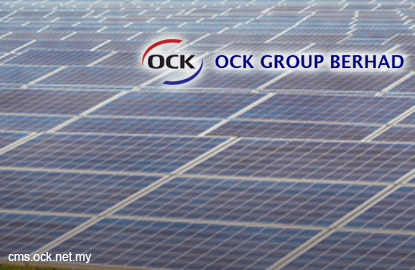
This article first appeared in The Edge Financial Daily, on May 6, 2016.
OCK Group Bhd
(May 5, 83.5 sen)
Initiating coverage with outperform rating and target price (TP) of 95 sen: We are initiating coverage on OCK Group Bhd with an “outperform” rating and a discounted cash flow (DCF)-driven TP of 95 sen. OCK is principally involved in the provision of telecommunications network services. We like OCK for: i) its healthy cash flow on the back of an escalating recurring income trend; ii) spreading its wings in Myanmar and across Southeast Asia; iii) its ability to ride with the passive infrastructure sharing trend; iv) its earnings before interest, taxes, depreciation and amortisation margin expanding trend; and v) potential growth through mergers and acquisitions activity.
OCK’s strategy to strengthen its recurring income through strategic regional expansion has started to bear fruit. Its recurring income soared to 18% (of the total group turnover) in financial year ended Dec 31, 2015 (FY15), versus 1.4% in FY13. Moving forward, we expect the group’s turnover to record 26% year-on-year (y-o-y) and 22% y-o-y growth in FY16 and FY17 respectively, mainly underpinned by the full-year managed services revenue contribution from PT Putra Mulia Telecommunications and the maiden site rental business from Telenor Myanmar. The strong revenue growth is expected to drive the recurring income contribution to 23% (of its top line) in FY16 and 30% a year later.
We expect OCK to record another double-digit annual growth of 18% (to RM29.2 million) in FY16 on the back of higher telecommunications network services contribution. FY17 net profit, however, is expected to grow marginally by 1.1% (to RM29.5 million) as a result of the higher depreciation cost to be incurred after the full-year rental income contribution of its Myanmar project. Dividend, meanwhile, is expected to remain low in view of the capital-intensive business model. Our valuation methodology is based on DCF valuation (weighted average cost of capital: 9.1%) instead of the traditional price-earnings ratio methodology. This is to capture the group’s steady cash flow from its core tower operations over the long term, capital expenditure required, and the management’s strategy to drive recurring revenues. — Kenanga Research, May 5
